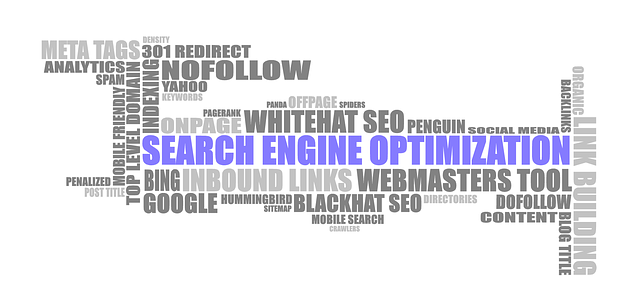White-Hat SEO Techniques are essential for optimizing user experience (UX) through ethical practices that enhance website visibility and relevance. By implementing strategies like keyword research, high-quality content creation, mobile optimization, semantic HTML, structured data markup, and XML sitemaps, websites attract organic traffic, reduce bounce rates, and improve conversion rates. A well-structured website with logical content hierarchy sends favorable signals to search engines, leading to better indexing and higher rankings. Content creation should prioritize engagement, readability, and relevance, while technical aspects like robots.txt files ensure efficient crawling. Measuring UX improvements through tools like Google Analytics helps optimize the site for both search engines and users, fostering continuous improvement and harmony between UX and SEO.
In today’s digital landscape, user experience (UX) is a cornerstone of successful online ventures. A well-optimized website that delivers an exceptional UX not only retains visitors but also enhances search engine rankings. This article explores the symbiotic relationship between SEO and UX, delving into proven White-Hat SEO techniques that prioritize user needs. From structuring websites for seamless navigation to creating engaging content and implementing technical optimizations, we’ll uncover strategies to elevate both search visibility and user satisfaction.
Understanding User Experience (UX) and its Impact on SEO

User Experience (UX) is a pivotal aspect of website design, focusing on enhancing user interaction and satisfaction. When users find a site easy to navigate, visually appealing, and relevant to their needs, they are more likely to explore its content deeply, leading to increased engagement and lower bounce rates. This positive UX directly influences search engine optimization (SEO), as Google and other search engines prioritize websites that offer valuable and accessible user experiences.
White-Hat SEO Techniques play a crucial role in aligning website structure, content, and performance with modern UX standards. These techniques include optimizing page loading speeds, ensuring mobile responsiveness, implementing semantic HTML, and creating high-quality, keyword-rich content that addresses user queries. By focusing on UX, businesses can not only attract organic traffic through search engines but also foster a sense of loyalty and trust among their audience, ultimately driving conversions and business growth.
The Role of White-Hat SEO in Enhancing UX

White-Hat SEO plays a pivotal role in enhancing User Experience (UX). It focuses on ethical and sustainable practices, ensuring search engine results remain relevant and valuable to users. By employing White-Hat SEO Techniques, such as keyword research, quality content creation, and mobile optimization, websites can improve their visibility while aligning with user needs. These techniques not only attract organic traffic but also foster a positive experience by providing accurate, timely, and engaging information.
Moreover, White-Hat SEO contributes to reduced bounce rates, longer session durations, and improved conversion rates—all indicators of enhanced UX. It helps search engines understand the context and intent behind web content, leading to better indexing and ranking. Ultimately, this results in higher user satisfaction, increased engagement, and a stronger online presence for businesses, ensuring their websites remain competitive in the dynamic digital landscape.
Optimizing Website Structure for Better Navigation and UX

A well-structured website is a cornerstone of successful user experience (UX) and, by extension, effective White-Hat SEO Techniques. Organizing content in a logical manner with clear hierarchy helps users effortlessly navigate through pages, reducing bounce rates and encouraging deeper engagement. This translates into positive signals for search engines, as easier navigation indicates high-quality UX and valuable content.
Implementing semantic HTML, creating a clean URL structure, and utilizing breadcrumbs are practical strategies under White-Hat SEO Techniques that contribute to optimal website structure. These techniques not only enhance scannability but also enable search engine crawlers to better understand the context and relationships between pages, leading to improved indexing and higher rankings.
Content Creation: Crafting Engaging, SEO-Friendly Text

Content Creation plays a pivotal role in implementing effective White-Hat SEO Techniques for enhancing user experience. When crafting text, focus on creating engaging content that aligns with your target audience’s interests and search queries. This involves incorporating relevant keywords naturally throughout the copy, ensuring readability and relevance remain top priorities. Quality content not only satisfies users’ information needs but also encourages them to interact, share, and return to your site.
Engaging content should be well-structured, free from errors, and optimized for both search engines and human readers. This means using headings, subheadings, and bullet points for better scannability, as well as incorporating multimedia elements like images and videos to break up text and enhance user engagement. Remember, the goal is to create valuable content that provides real solutions to users’ problems, thereby improving overall website usability and search engine rankings through ethical SEO practices.
Technical SEO Implementation for Seamless User Journeys

Implementing Technical SEO strategies is an integral part of creating a seamless user experience, ensuring that your website becomes a haven for visitors and search engines alike. White-Hat SEO Techniques focus on ethical optimization methods, prioritizing the user’s journey from initial click to conversion and beyond. This involves optimizing site speed by reducing load times, ensuring mobile responsiveness, and implementing structured data markup to provide rich snippets in search results, enhancing visibility and click-through rates.
By addressing technical aspects like improving crawlability through XML sitemaps and robots.txt files, you ensure search engines can access and index your content efficiently. Additionally, setting up 301 redirects for merged or removed pages prevents broken links and maintains user trust. These practices not only boost SEO rankings but also contribute to a positive user experience, encouraging visitors to explore more of your site.
Measuring and Analyzing UX Improvements through SEO

Measuring and analyzing UX improvements through SEO is a critical step in understanding the effectiveness of your strategies. By employing White-Hat SEO Techniques, you can ensure that your optimizations are ethical and beneficial to both search engines and users. Tools like Google Analytics and Search Console provide valuable insights into user behavior, including bounce rates, time on page, and click-through rates. These metrics help identify areas where UX needs enhancement.
For instance, if a high bounce rate is observed after implementing SEO changes, it could indicate that the content isn’t meeting user expectations. This data can guide further optimization efforts, ensuring that the site not only ranks higher but also offers a positive and engaging experience for visitors. Regular analysis allows for continuous improvement, making UX and SEO mutually reinforcing rather than separate entities.
